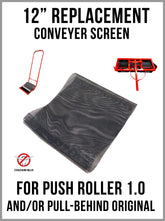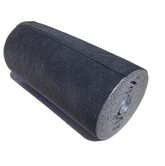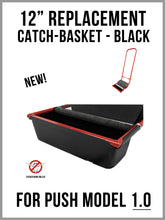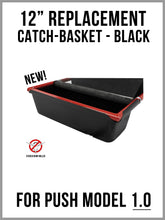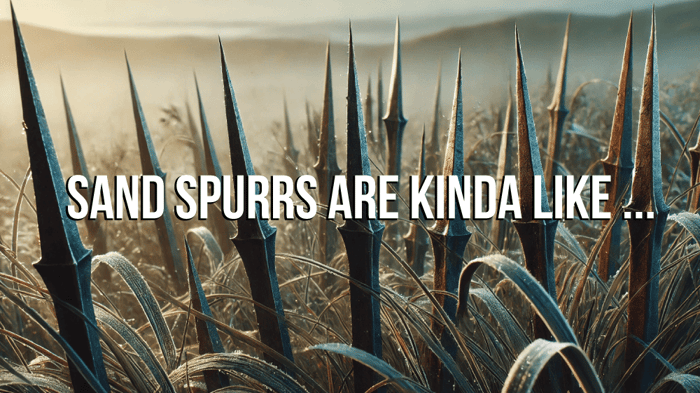Spring Lawn Care: Fertilization The Key to a Lush, Green Lawn!
Throughout the winter months, your soil loses vital nutrients, leaving your grass in need of replenishment to come out of dormancy. In fact, spring is when your lawn requires more energy than any other season to kickstart its growth cycle.
Over time, soil nutrient depletion can leave your lawn without the essential nutrients it needs to grow lush and green. Spring fertilization is the best way to ensure your grass has the energy to develop strong roots and healthy growth. But why is spring the ideal time for fertilization?
The Importance of Spring Fertilization / Spring Lawn Care
When warmer weather rolls around, spring fertilization becomes a crucial part of lawn care. It provides your lawn's root system with the essential nutrients needed for a strong start to the growing season. Additionally, combining fertilization with a weed control treatment helps prevent pesky weeds from invading your lawn.
Fertilizers generally come in two forms: liquid and granular, each with its own set of benefits.
Liquid Fertilizer
Liquid fertilizers are concentrated solutions or powders mixed with water and applied evenly across your lawn using a hose or sprayer.
Benefits of liquid fertilizer:
- Quick soil absorption
- Simple and efficient application
- Fast, visible results
Granular Fertilizer
Granular fertilizer consists of tiny pellets that are sprinkled onto the grass. They provide long-lasting nourishment, gradually releasing nutrients over an extended period, ranging from one to nine months.
Benefits of granular fertilizer:
- Long-term nutrient release
- Fewer applications needed
- Can be applied before the growing season
Essential Nutrients for a Thriving Lawn
Fertilizer provides three key nutrients necessary for optimal lawn health:
- Nitrogen (N): A vital component of chlorophyll, nitrogen supports amino acid and protein production, which encourages lush green growth.
- Phosphorus (P): Responsible for photosynthesis and energy transfer, phosphorus helps roots develop and strengthens plant structure.
- Potassium (K): Plays a crucial role in plant metabolism, water regulation, and adaptation to environmental stress.
To prevent nutritional deficiencies that can inhibit plant development and lead to a dull appearance, it’s important to apply the right balance of these nutrients at the right time.
Preparing Your Lawn for the Growing Season
During the winter, grass enters dormancy—losing its green color, ceasing growth, and focusing metabolic energy on root systems to survive cold conditions. As temperatures rise and snow melts, it's the perfect time to apply fertilizer and weed control treatments to jumpstart growth and replenish nutrients.
Combining Fertilization with Weed Control
Many common weeds, especially in the Midwest and Southern states, sprout during the same growing seasons as grass. Applying a pre-emergent weed treatment along with your first spring fertilizer application helps prevent weeds from taking over your lawn. For example, broadleaf weeds are particularly active during early fall, so early intervention is crucial.
By combining fertilization and weed control, you can simultaneously nourish your lawn while ensuring it remains free from invasive plants.
Don't Forget to Remove Goat Heads and Sticker Burrs
Once your lawn, land, or property is beautiful and green, the last thing you want is to deal with pesky sticker burrs and goat heads. These stubborn weeds can ruin the enjoyment of your outdoor space, causing discomfort and even damage to pets and equipment. Removing them early in the season can save you time and effort later.
A great solution for tackling sticker burrs is the Sticker Burr Roller, a tool designed to efficiently remove burrs from your lawn without the need for chemicals. It's an easy-to-use, effective way to keep your outdoor spaces free from these nuisances.
Seasonal Nutrient Requirements in Southern States
Spring Lawn care in states such as Texas, New Mexico, and Arizona presents unique challenges due to hotter temperatures and arid conditions. In these regions, soil tends to have lower organic content and may require more frequent fertilization to maintain a healthy lawn. Choosing slow-release fertilizers can help sustain nutrient availability during extended dry periods.
Additionally, warm-season grasses commonly found in these states—such as Bermuda, St. Augustine, and Zoysia—have different nutrient needs compared to cool-season grasses. They thrive with higher nitrogen applications during their peak growth periods in late spring and summer.
Organic vs. Synthetic Fertilizers
When deciding between organic and synthetic fertilizers, it’s important to weigh the benefits and challenges of each.
Organic Fertilizers:
- Improve soil health by increasing microbial activity
- Release nutrients slowly, providing long-term benefits
- Environmentally friendly, reducing the risk of runoff
Synthetic Fertilizers:
- Provide immediate nutrient availability
- Easily controlled application rates
- More cost-effective for large areas
While synthetic fertilizers offer rapid results, organic options contribute to long-term soil improvement, making them a preferred choice for sustainable lawn care.
Common Fertilization Mistakes to Avoid
To ensure successful lawn fertilization, avoid these common mistakes:
- Over-fertilization: Excess fertilizer can burn the grass and lead to excessive growth, increasing mowing frequency.
- Under-fertilization: Insufficient nutrients can leave your lawn weak and prone to disease.
- Improper timing: Applying fertilizer too early or too late can reduce its effectiveness.
- Ignoring soil testing: Without testing, you may apply the wrong nutrients, leading to imbalances.
- Overwatering: Watering too much after fertilization can wash away nutrients before they are absorbed.
Spring fertilization is essential for a vibrant, healthy lawn, especially in Southern states where soil and climate conditions can present unique challenges. Whether you opt for liquid or granular fertilizer, providing your lawn with the right nutrients will set the stage for robust growth throughout the season. Don’t forget to pair fertilization with a weed control treatment to maximize your lawn’s health and beauty while maintaining sustainable practices.
#LawnCare
#SpringFertilization
#HealthyLawn
#SouthernLawnCare
#FertilizationTips
#WeedControl
#LushLawn
#OrganicFertilizer
#SyntheticFertilizer
#BermudaGrass
#TexasLawnCare
#NewMexicoLawnCare
#ArizonaLawnCare
#SpringLawnCare
#GrassMaintenance
#SoilHealth
#WaterConservation
www.StickerBurrRoller.com
---------
Summary of the Article:
This article provides a comprehensive guide to spring fertilization, emphasizing its importance in maintaining a lush, healthy lawn. It explains how soil nutrients deplete over the winter months and why spring is the best time to replenish them to support strong root development and growth. The article explores the benefits of liquid and granular fertilizers, detailing their application methods and advantages.
Key nutrients such as nitrogen, phosphorus, and potassium are highlighted for their essential roles in plant health. The article also covers region-specific fertilization strategies, particularly for Southern states like Texas, New Mexico, and Arizona, where arid conditions require special considerations such as slow-release fertilizers and water-efficient techniques.
In addition to fertilization, the article stresses the importance of weed control and introduces the Sticker Burr Roller as a solution for removing goat heads and sticker burrs, ensuring a burr-free lawn. Readers are directed to www.StickerBurrRoller.com for more information.
Further topics include best practices for fertilization, common mistakes to avoid, environmental considerations, and the benefits of choosing between organic and synthetic fertilizers. Expert tips and case studies provide additional insights into successful lawn care practices.
Overall, the article serves as a complete guide to spring lawn care, helping homeowners make informed decisions to achieve a vibrant, healthy lawn while addressing regional challenges and weed control solutions.
